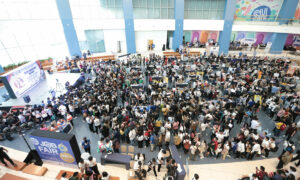The story of rural farmers transforming into artisans and exporters is one of resilience, creativity, and adaptability. Traditionally limited by geographical, financial, and knowledge constraints, these farmers often lacked the means to reach global markets. However, the advent of technology, coupled with the transformative impact of Geographical Indication (GI) tagging, has created new opportunities, enabling them to overcome long-standing barriers and achieve economic empowerment.
The GI tag revolution and its artisanal impact
The GI tag revolution has been instrumental in bringing recognition to the artistry and craftsmanship inherent in many agricultural products. Farmers who were previously limited to selling raw produce are now returning to their roots as artisans, emphasising the unique cultural and geographical identity of their goods. This shift is particularly significant in India, where GI tags have been awarded to agricultural products such as Darjeeling tea, Basmati Rice, Alphonso mangoes, Nagaland’s Naga chilli, and Mysore silk. These tags not only protect the authenticity of these products but also enhance their marketability on a global scale.
For instance, the GI tag for Darjeeling tea has empowered local tea growers to establish themselves as premium exporters, leveraging their unique heritage. Similarly, farmers cultivating turmeric in Erode, Tamil Nadu—often referred to as the “Turmeric City”—have reinvented themselves as producers of artisanal turmeric tea and powder, capitalising on global demand for organic and sustainable products.
Technology bridging the gap
One of the most significant challenges faced by rural farmers has been access to information about international markets. Digital platforms and e-commerce marketplaces are now bridging this gap, providing farmers with insights into market demands, pricing trends, and consumer preferences. Platforms like Amazon Global, Shopify, and specialised agricultural trade portals allow farmers to list their GI-tagged products for a worldwide audience. These tools simplify logistics, offer payment solutions, and streamline the process of obtaining export documentation.
Additionally, technology has empowered farmers to refine their craft and reimagine their produce as value-added goods. Advanced processing tools, accessible through cooperative initiatives or micro-financing, have helped farmers meet international quality standards. For instance, farmers growing Millet, a GI-tagged product in Karnataka, have started producing gluten-free flour and millet-based snacks that cater to the health-conscious global consumer.
Blockchain and IoT: Ensuring trust and quality
The integration of blockchain technology and IoT devices has bolstered trust in products from rural farmers. Blockchain provides traceability and authenticity, essential for gaining consumer trust in global markets. Consumers in developed countries are increasingly demanding transparency regarding product origins, and blockchain ensures they can verify the farm-to-table journey. Similarly, IoT devices help monitor crop quality, soil health, and supply chain logistics, enabling farmers to maintain consistent quality standards for their GI-tagged products.
Government and community support
Rural farmers are finding support through government initiatives and NGOs that provide training in digital literacy, artisanal skills, and export procedures. Programmes like India’s “One District, One Product” scheme emphasise empowering rural communities to enhance their production capabilities and connect with global markets. These programs often collaborate with tech companies to provide mobile apps, cloud-based solutions, and digital marketing expertise to farmers.
Community-driven cooperatives have also played a pivotal role in transforming rural farmers into artisans. By pooling resources, knowledge, and expertise, these cooperatives can afford shared access to expensive machinery, technology, and export consultants. This collective entrepreneurship drives innovation, enabling farmers to experiment with product design, packaging, and branding—critical elements for international appeal.
Challenges and the way forward
While the transformation is remarkable, the journey is not without challenges. Language barriers, internet connectivity issues, and a lack of financial literacy often hinder progress. Addressing these challenges requires a collaborative effort from governments, private enterprises, and international organizations to ensure that rural farmers can fully participate in global trade.
Preserving cultural heritage through artistry
The transformation of rural farmers into artisans highlights the immense potential of combining traditional wisdom with modern technology. By leveraging the GI tag revolution and embracing digital tools, these farmers are not only enhancing their livelihoods but also preserving cultural heritage and contributing to the global economy. As these individuals master the art of exporting, they demonstrate that local craftsmanship—rooted in authenticity and artistry—can thrive on a global scale.
The author is CEO, VOSMOS






Leave a Comment